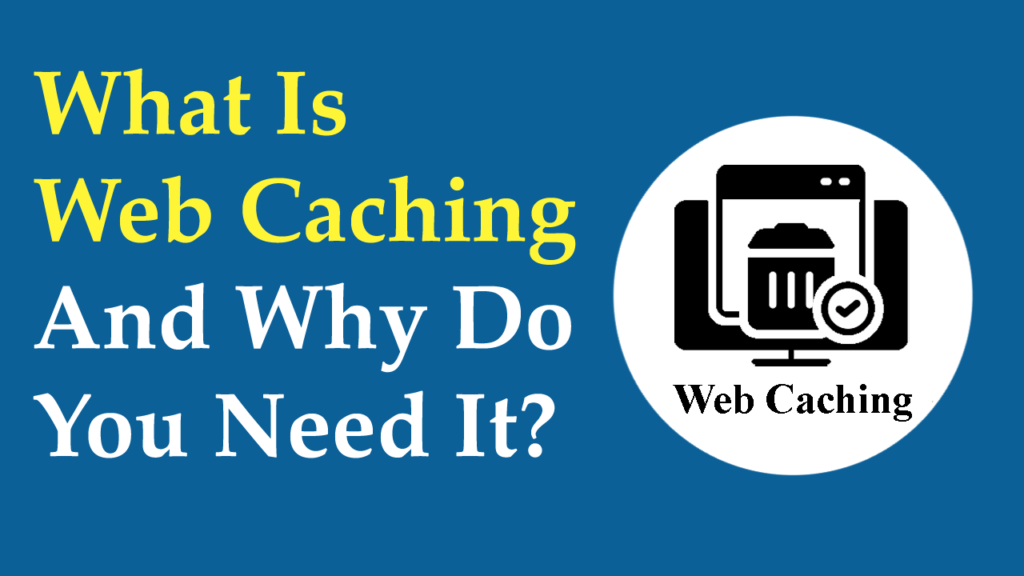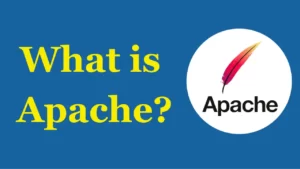Want to learn what is web caching or website caching? what are the different types of web caching? and why do you need to enable a caching service? Then this valuable blog is exclusively for you.
Never forget – if your website takes longer than 3 seconds, an average of 40% – 53% of your visitors will abandon your website. That’s why every website owner wants to load their website extremely fast.
A fast website page speed ensures a better user experience, boosts conversion rate, improves search engine ranking, reduces bounce rate, and increases page views.
Hence, you need to follow best practices to speed up your website. And web caching is one of the key solutions to boost the speed of your website.
Let’s define what is web caching.

Table of Contents
What is Web Caching?
Web caching is the process of storing copies of website content or webpage in a cache or temporary storage for reuse. In fact, this reduces website loading time and server load.
The content of a webpage is cached when a user has accessed it. The next time another user requests the same webpage, the cache will deliver the page right away. This enables the origin server from getting overloaded.
Let me explain with an example. If I ask you what is the result of 3 x 2, you already know the answer is 6 without having to do any calculations. Because you have done the same calculation multiple times. That’s how web caching works.
Quick Note: Technically, cache term means temporary storage or memory that store the data files.
What Are the Different Types of Web Caching?
There’re four different types of web caching: Server Web Caching, Micro Web Caching, Site Web Caching, and Browser Web Caching
Let’s define each one in detail.
#1. Server Web Caching
Server web caching covers different types of caching such as CDN (Content Deliver/Distributed Network), opcode caching, and object caching. Each one saves different content of your website on the server.
The server web caching is controlled by the website owner. And this works best to handle more traffic because when a request is made for accessing a webpage, the server checks its cache storage for the requested webpage before fully processing the visitor’s request.
If requested content (webpage) is available in cache (storage), then the cache serves it faster. However, if it’s not available in the cache, then the request sends to the server to deliver the content. After that, the delivered content will be cached.
#2. Micro Web Caching
Micro web caching is used to store content (static versions of dynamic elements) for a very short period (maximum 10 seconds).
This caching type gives more control to an end-user than a website owner. It’s the perfect option for those websites that regularly update the content like currency exchange sites, stock websites, and breaking news sites.
#3. Site Web Caching
Site web caching (also called page caching) stores the website content when a web page is loaded for the first time. The cache (temporary storage) will quickly load the stored webpage when it’s visited again.
As this caching method is controlled by visitors, that’s why it’s called client-side caching. And the website owner only has to manage how long the website content stays in that cache.
If you frequently change the elements or update the content on your web pages, you should choose a shorter cache expiration period. However, if you never change elements or update the content, then setting up the longest cache expiration period is the right choice.
#4. Browser Web Caching
This method involves a visitor’s web browser that downloads various resources (images, HTML, JavaScript files, CSS stylesheets) of your webpages to their local drive. This speeds up visitors’ browsing and gives a better user experience.
Why Web Caching Is So important? (6 Benefits)
In fact, web caching helps you to build your website and lets you enjoy many benefits.
Here’s the list of 6 advantages that you get by enabling a web caching service.
#1. Speed Up Your Website
You need to speed up your website to enhance the user experience, boost search rankings, reduce bounce rate, and increase user engagement rate,
To speed up your website, web caching is one of the best practices you must implement. And once you’ve enabled a caching service for your website, your webpages will be loaded quickly and seamlessly.
#2. Reduce Server Load
When a visitor makes a request for a webpage, the web caching service firstly checks the temporary storage for the requested webpage (content) without processing their request in full. If it’s available in the cache, it will be sent promptly. This saves your server from getting overloaded.
#3. Handle More Traffic
As web caching reduces your server load, that’s why your server will accommodate more traffic smoothly.
#4. Ensure A Better User-experience
As you know that web caching kicks up a speed boost of your website, that’s why visitors to your website will have a better experience as they will be able to move through your site faster.
#5. Boost Search Engine Ranking
How fast load your website is a key factor in search engine rankings. And Google uses it when determining results on SERPs. Hence, by enabling a caching service that makes faster your website, you could outrank your competitors.
Read More: How to Use Semrush to Improve SEO | 7 Ways to Improve SEO
#6. Increase Conversion Rate
Reports have shown that fast page speed will result in a better conversion rate. This means the faster your web pages load, the more users will likely perform targeted actions on your website.
Conclusion
Web caching is the process of storing your website content and data in temporary storage for quickly loading in the future.
The types of web caching are server web caching, micro web caching, browser web caching, and site web caching.
I recommend you install a caching service for your website to boost the speed, increase conversion rate, improve SEO, handle more traffic, reduce server load and deliver a better user experience.
I hope you’ve understood what is web caching. what are the different types of web caching? and why do you need to enable a web caching service for your website?
Read More:
- What Is An SSL Certificate? & What are the Different Types Of SSL Certificates?
- How to Choose A Web Hosting Provider? (25 Factors to Consider)
- How to Evaluate Best Web Hosting Customer Support & Why You Need it?
- What is Monthly Bandwidth in Web Hosting? & How Much Do You Need it?
- What Is Uptime In Web Hosting? & TOP 10 Uptime Monitoring Tools
- How To Backup Your WordPress Website?


